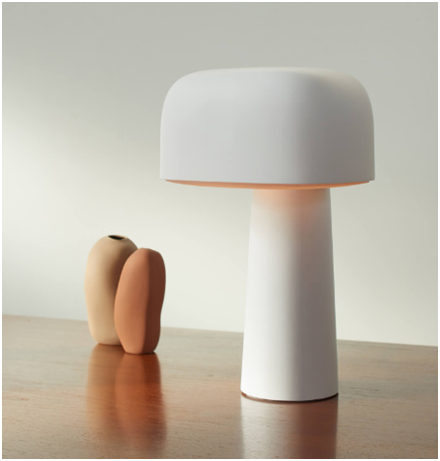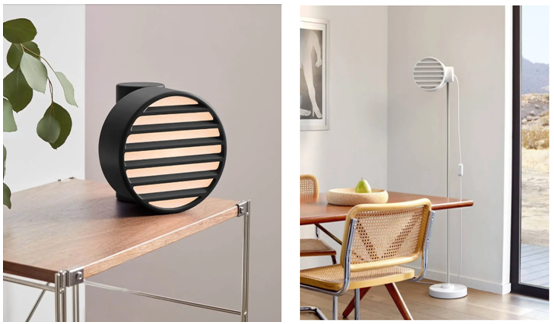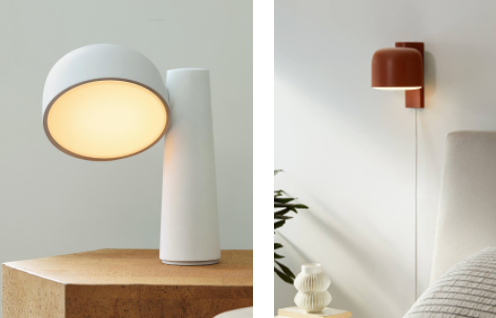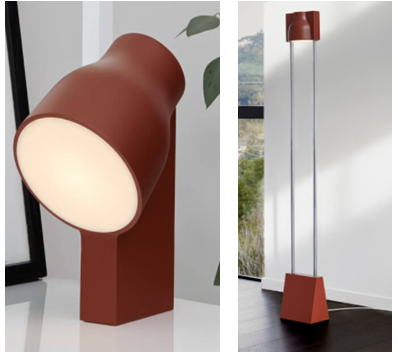
Charles R. Goulding and Ryan Donley light up with sustainably-made 3D printed lamps.
Gantri, a digital platform lighting lamp product manufacturer, and Ammunition, a product designer, have partnered to put out a full range of corn-based sustainable lamps. Ammunition is well known for their work behind Beats by Dre and the Ember smart mug while Gantri has been at the forefront of sustainable and affordable high-end lighting.
The partnership has led to a unique collection of stylish lamps from plant-based plastics (sourced from nature) and utilization of 3D printing for a sustainable and creative lamp collection. The lamps are beautiful and there are three separate product lines all with a distinctive theme. They are as follows:
Signal

The Signal Collection by Ammunition [Source: Gantri]
The Signal line of lamps is marked by the horizontal slants for a functional style and theme with influence stemming from traffic signals, hence the name. The simple geometry is ideal for utilizing 3D printing methods as the design provides for efficient and effective development.
Gio

The Gio is a simplistic lamp variation that can be utilized in several ways from serving as a table lamp to a wall sconce set, as well as a floor lamp. The lamp pays homage to early Italian lighting designs as well as a reference to Gio Ponti, an Italian architect and designer. The Gio can achieve a refined craftsmanship style that coincidentally would not have been achievable utilizing traditional manufacturing.
Carve

The Carve series is designed to feel as if it was carved from stone, giving it a sculptural feeling as well as an ability to serve as a multi-functional piece. The fixture was a challenging design piece that was facilitated through 3D printing methods to pair industrial design of modern objects, which opens a new door for future capabilities in sustainable and affordable lighting fixtures.
3D Printed Lighting
According to Robert Brunner, Ammunition’s Founder and Partner, “We’re always exploring new processes and materials that will drive the future of product design, so it was exciting for us to work with Gantri to create products that challenge preconceptions of 3D printed objects. The Gantri platform allowed us to quickly iterate and refine the details of each light in a process much closer to craftsmanship, something we wouldn’t have been able to accomplish with traditional manufacturing.”
We have previously written Fabbaloo articles about the focused effort to encourage 3D printing and lighting partnerships supported by the Lighting Research Institute at RPI in Troy, New York.
3D printing lighting fixtures and similar activities may be eligible for federal and some state tax incentives such as the Research and Development tax credit.
The Research & Development Tax Credit
Whether it’s used for creating and testing prototypes or for final production, 3D printing is a great indicator that R&D Credit eligible activities are taking place. Companies implementing this technology at any point should consider taking advantage of R&D Tax Credits.
Enacted in 1981, the now permanent Federal Research and Development (R&D) Tax Credit allows a credit that typically ranges from 4%-7% of eligible spending for new and improved products and processes. Qualified research must meet the following four criteria:
- Must be technological in nature
- Must be a component of the taxpayer’s business
- Must represent R&D in the experimental sense and generally includes all such costs related to the development or improvement of a product or process
- Must eliminate uncertainty through a process of experimentation that considers one or more alternatives
Eligible costs include US employee wages, cost of supplies consumed in the R&D process, cost of pre-production testing, US contract research expenses, and certain costs associated with developing a patent.
On December 18, 2015, President Obama signed the PATH Act, making the R&D Tax Credit permanent. Since 2016, the R&D credit has been used to offset Alternative Minimum Tax (AMT) for companies with revenue below $50MM and, startup businesses can obtain up to $250,000 per year in payroll tax cash rebates.
Casting a New Light
3D printing can open a new landscape for lighting fixtures as more sustainable and durable collections become feasible when compared to traditional methods. With so many people now staying at home more lighting is needed for a variety of uses. Good design with sustainable plant materials should be a very popular product category.
